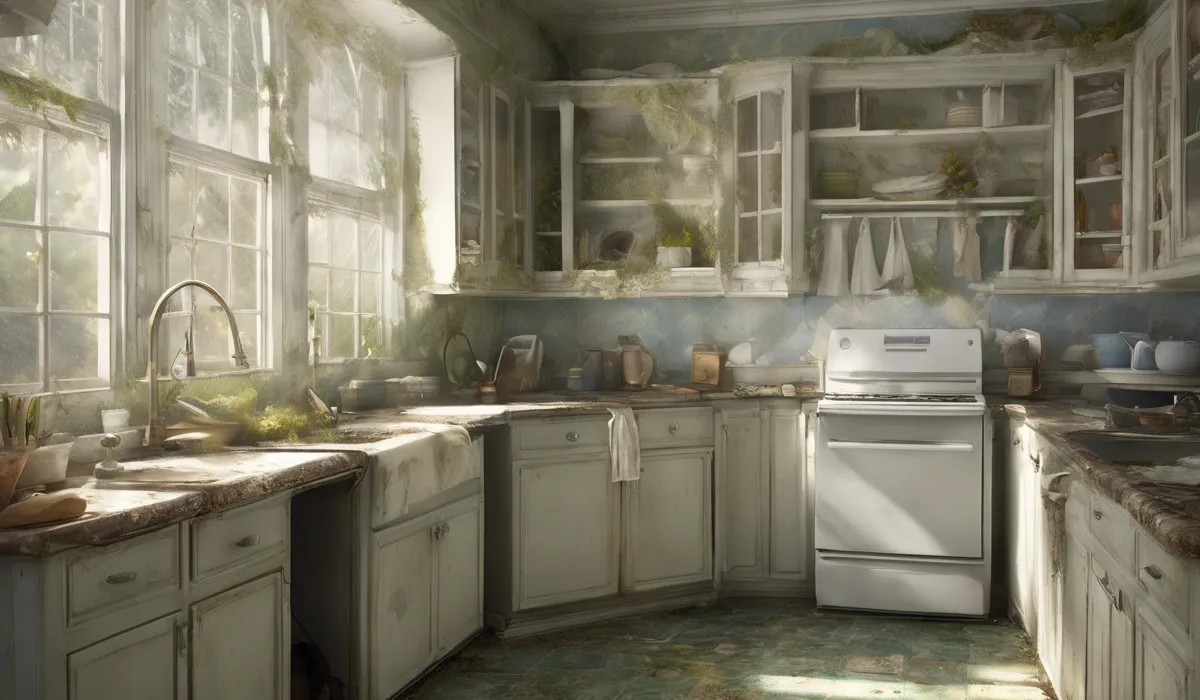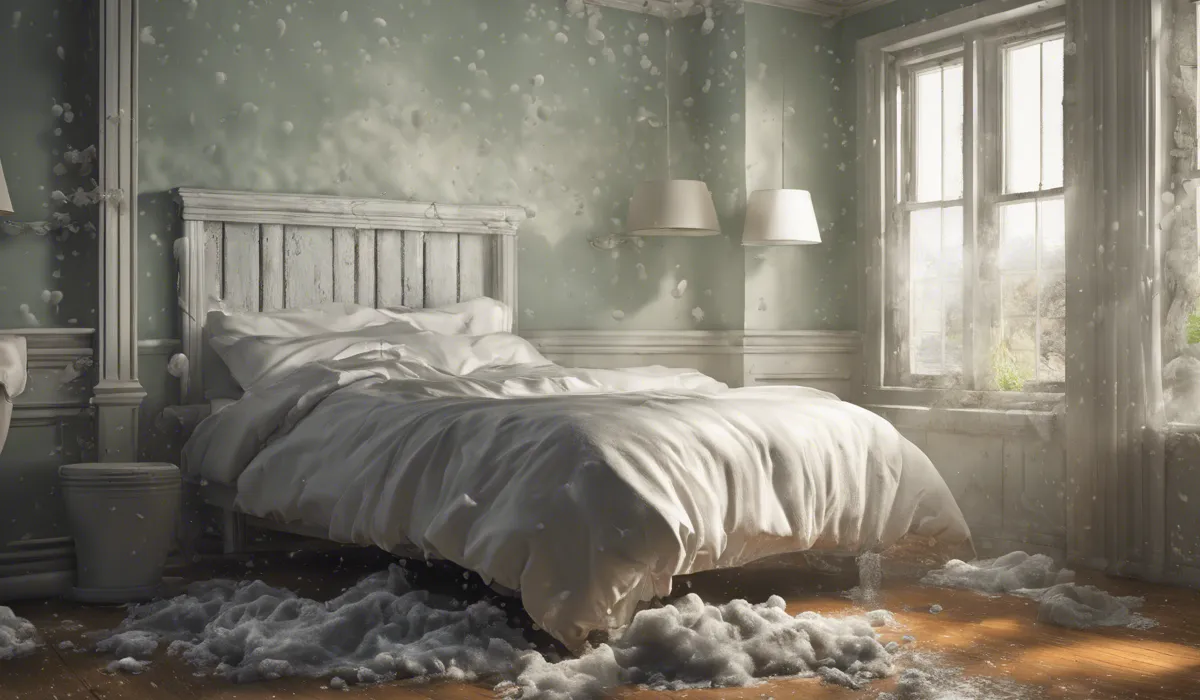Mildew smell in a house is commonly caused by the growth of mold due to excess moisture. This can result from high humidity, water leaks, or poor ventilation. Absorbent materials like carpet or upholstery often harbor mildew when damp.
Sources of Mildew Smell in the House

High Humidity Levels
Mildew thrives in moist environments. When the humidity in your house rises above 60%, it creates an ideal breeding ground for these pesky fungi.
High humidity can result from various factors, including weather conditions, daily activities like showering and cooking, and inadequate moisture control systems.
Common areas for humidity build-up are bathrooms, kitchens, and basements. Bathrooms and kitchens generate a lot of steam, which, without proper ventilation, can lead to mildew growth.
Basements are naturally cooler and can become damp, especially if they are not properly waterproofed.
Poor Ventilation
Lack of air circulation prevents moisture from drying out, making still air pockets the perfect spot for mildew to form.
This is especially true in areas like closets, laundry rooms, and attics, where airflow may be minimal. An effective ventilation system is crucial in these spaces to carry humid air outside.
Water Leaks and Dampness
Water leaks, whether from a damaged roof, plumbing issues, or foundation cracks, can soak into the structure of your home.
Materials like wood, drywall, and insulation retain this moisture, and if not dried promptly, become a prime habitat for mildew. It’s essential to identify and repair leaks swiftly to prevent mildew infestation.
When materials remain damp, mildew not only grows but also causes a musty odor. This smell is a telltale sign of a potential mildew problem.
Regularly inspecting your home for signs of water damage can help in early detection and remediation.
Health Impacts of Mildew in the Home

Respiratory Issues
Exposure to mildew can significantly impact your breathing. Symptoms such as coughing, wheezing, and nasal congestion are common.
Moreover, for those with allergies or asthma, mildew can trigger or worsen their conditions. Maintaining a clean environment is crucial to minimize these respiratory risks.
Skin and Eye Irritation
Beyond respiratory problems, mildew exposure can also irritate your skin and eyes. You might experience redness, itching, or a rash.
Eye irritation often presents as red, watery, or itchy eyes. If you notice these symptoms, it’s important to address the mildew issue in your home to prevent further discomfort.
Long-term Health Risks
While short-term exposure to mildew can be irritating, long-term exposure raises more serious health concerns.
Chronic respiratory conditions, immune system suppression, and even neurological problems can occur. It’s vital to take mildew growth seriously and act quickly to protect your health.
Remediation and Prevention Strategies

Identifying and Eliminating Sources of Moisture
Begin by inspecting your home for signs of moisture. Look for condensation on windows, peeling paint, or warped materials, which can indicate high humidity levels.
Use moisture meters to detect hidden dampness. Fixing leaks, improving drainage, and using dehumidifiers can help manage moisture levels.
Cleaning and Removal Techniques
To clean mildew, you’ll need protective gear, a scrub brush, and a cleaning solution like diluted bleach or vinegar.
Scrub the affected areas thoroughly and dry completely. For extensive mildew issues, you may need to remove and replace affected materials or seek professional help.
Preventative Measures
To prevent mildew growth, keep your home dry and well-ventilated. Use fans in bathrooms and kitchens, open windows when weather permits, and ensure your home has proper insulation and ventilation.
Regular cleaning and reducing indoor plants can also help as plants can increase indoor humidity.
By understanding the sources of mildew smell in your home, recognizing the health risks, and implementing effective remediation and prevention strategies, you can maintain a healthier living space.
Vigilance and routine maintenance are your best defenses against the challenges posed by mildew.
FAQs About Mildew Smell in House
What causes a mildew smell in a house?
The mildew smell in a house is typically caused by the growth of mold, which thrives in areas with excess moisture, such as those with high humidity, water leaks, or inadequate ventilation.
How does high humidity contribute to a mildew smell?
High humidity in a house creates a damp environment, which is ideal for mold growth that can lead to a mildew smell.
Can water leaks lead to a mildew smell in homes?
Yes, water leaks can cause dampness in various materials and surfaces, which promotes mold growth and results in a mildew smell.
Why does poor ventilation cause a mildew smell?
Poor ventilation traps moisture inside the house, allowing mold to grow and produce a mildew smell.
Do absorbent materials in a house contribute to the mildew smell?
Yes, absorbent materials like carpets or upholstery can harbor mildew when they become damp, contributing to the overall mildew smell in a house.
Final Thoughts
The presence of a mildew smell in a house is typically due to mold growth, which thrives on moisture.
Causes of this excess moisture include elevated humidity levels, water leaks, and insufficient ventilation.
Materials that absorb moisture, such as carpets and upholstery, are common sites for mildew development when they remain damp.
